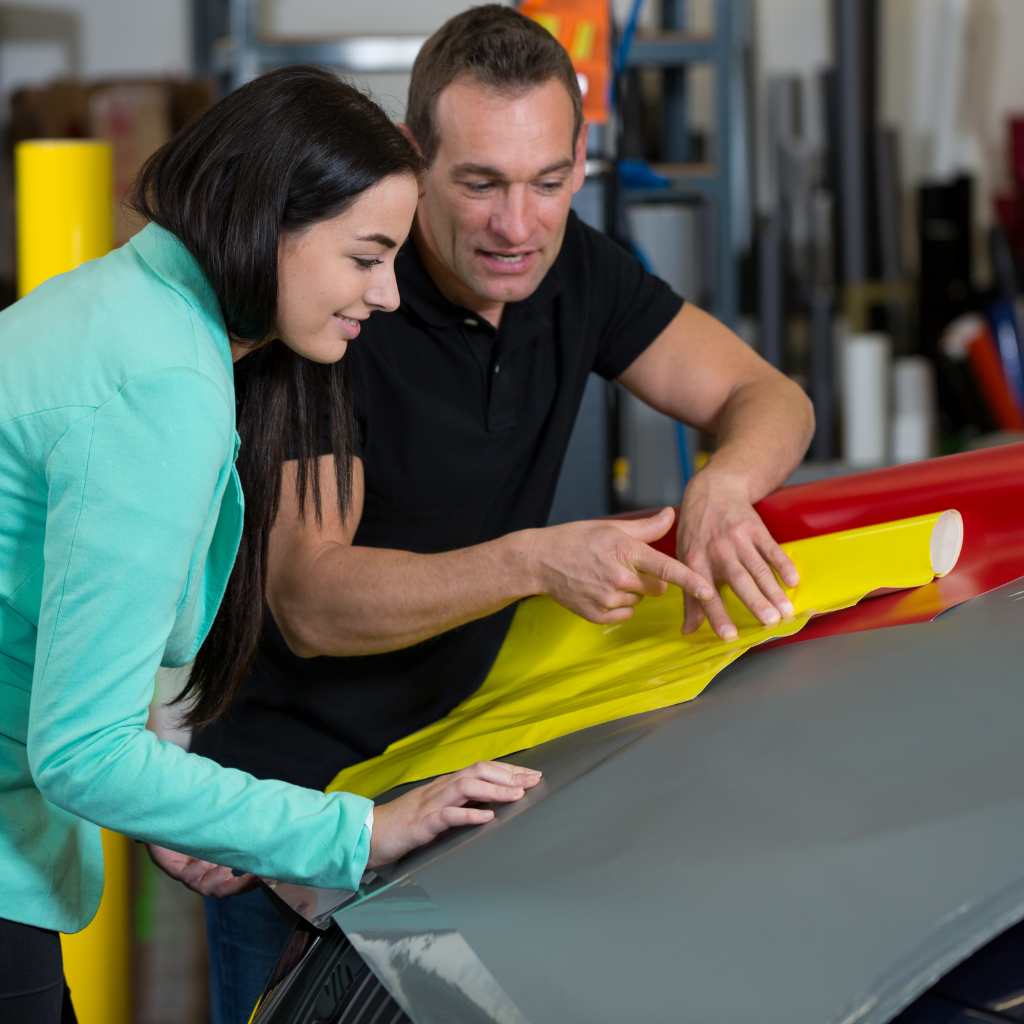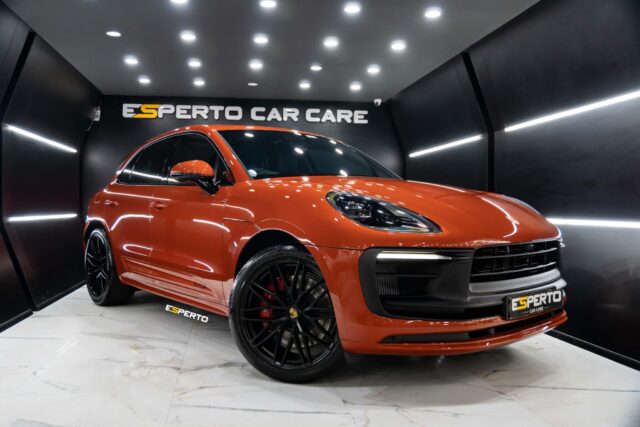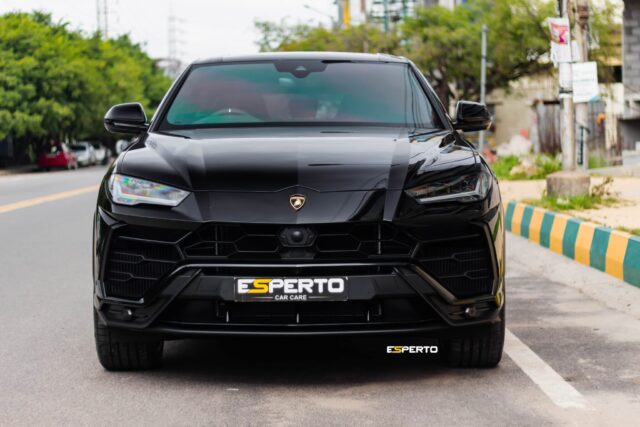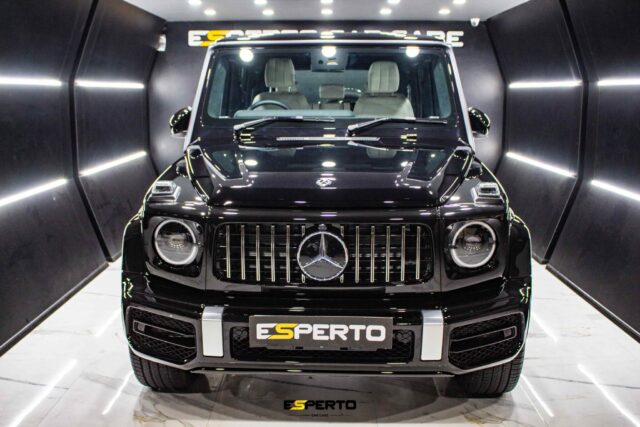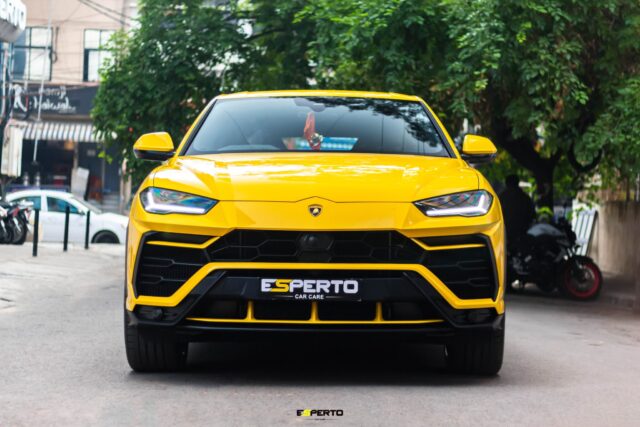When considering the materials used for car wraps, it is essential to distinguish between cast and calendared vinyl. Cast vinyl is lauded for its thinness and conformability, making it suitable for intricate curves and long-term use. Conversely, calendared vinyl, being thicker and less pliable, is best for flat surfaces and shorter durations. The industry also offers a spectrum of finishes like matte and glossy, alongside innovative options such as chrome and carbon fiber, enhancing customization potential.
Key Takeaways
- Cast vinyl, known for its durability and high conformability, is ideal for wrapping vehicles with curved surfaces.
- Calendared vinyl is cost-effective, thicker, and best suited for flat surfaces due to its low conformability.
- Matte vinyl enhances aesthetic appeal with a non-reflective finish, offering protection against environmental hazards.
- Glossy vinyl provides a high-shine finish, enhancing color vibrancy and featuring air-release technology for easy application.
- Vinyl wraps offer customization with various colors and finishes, including gloss, matte, chrome, and carbon fiber.
What Are the Different Types of Vinyl Wraps for Cars?
Vinyl wraps for cars can be categorized into several distinct types, each with unique properties and applications.
Cast vinyl, known for its durability and conformability, contrasts with calendared vinyl, which offers a cost-effective solution with less flexibility.
Meanwhile, matte vinyl provides a non-reflective finish, enhancing aesthetic appeal, while glossy vinyl is characterized by its high-shine surface, delivering a vibrant and polished appearance.
How Does Cast Vinyl Differ from Calendared Vinyl
When comparing cast and calendared vinyl, understanding their manufacturing processes is essential for discerning their applications and performance characteristics. Cast vinyl, a premium vinyl material, is created through a casting process that results in a thin, conformable film ideal for vehicle wraps. This type is renowned for its durability and ability to adhere smoothly to curved surfaces, especially when a heat gun is utilized. In contrast, calendared vinyl is thicker and produced by rolling, thereby less conformable and more suited to flat surfaces.
| Feature | Cast Vinyl | Calendared Vinyl |
|---|---|---|
| Manufacturing | Casting | Calendaring |
| Thickness | Thin | Thick |
| Conformability | High | Low |
| Durability | Long-term | Short to medium-term |
| Ideal Surfaces | Curved | Flat |
The quality of the vinyl and the expertise of the wrap installer greatly influence the outcome.
What Are the Benefits of Using Matte Vinyl
Matte vinyl wraps have surged in popularity among automotive enthusiasts and professionals due to their distinctive non-reflective finish and aesthetic versatility.
This car vinyl wrap offers a sophisticated texture that enhances the vehicle’s appearance while minimizing glare. One key advantage is its paint protection capability, shielding the car’s original finish from environmental hazards and minor abrasions.
Matte vinyl is available in a variety of colors, allowing for extensive customization options tailored to individual preferences. The adhesion properties of matte vinyl guarantee a durable bond to the vehicle’s surface, preventing peeling or bubbling over time.
Professional installation is recommended to achieve the best results, guaranteeing the car wrap adheres seamlessly to complex contours and exhibits a flawless, uniform appearance.
What Are the Key Features of Glossy Vinyl
Following the discussion on matte vinyl’s advantages, attention turns to glossy vinyl wraps, a staple in the automotive customization sector. Known for their mirror-like sheen, these wraps offer a showroom finish that accentuates a vehicle’s contours.
The gloss in glossy car vinyl is achieved through advanced wrap materials that enhance the vibrancy of solid colors. These professional wraps often incorporate air-release technology, facilitating a bubble-free application process, essential for maintaining a flawless surface.
The high-gloss finish not only elevates aesthetics but also provides a protective layer against environmental elements. As a result, glossy vinyl wraps are favored for their ability to transform vehicles with a sleek, polished appearance, making them an enduring choice among automotive enthusiasts seeking visual impact.
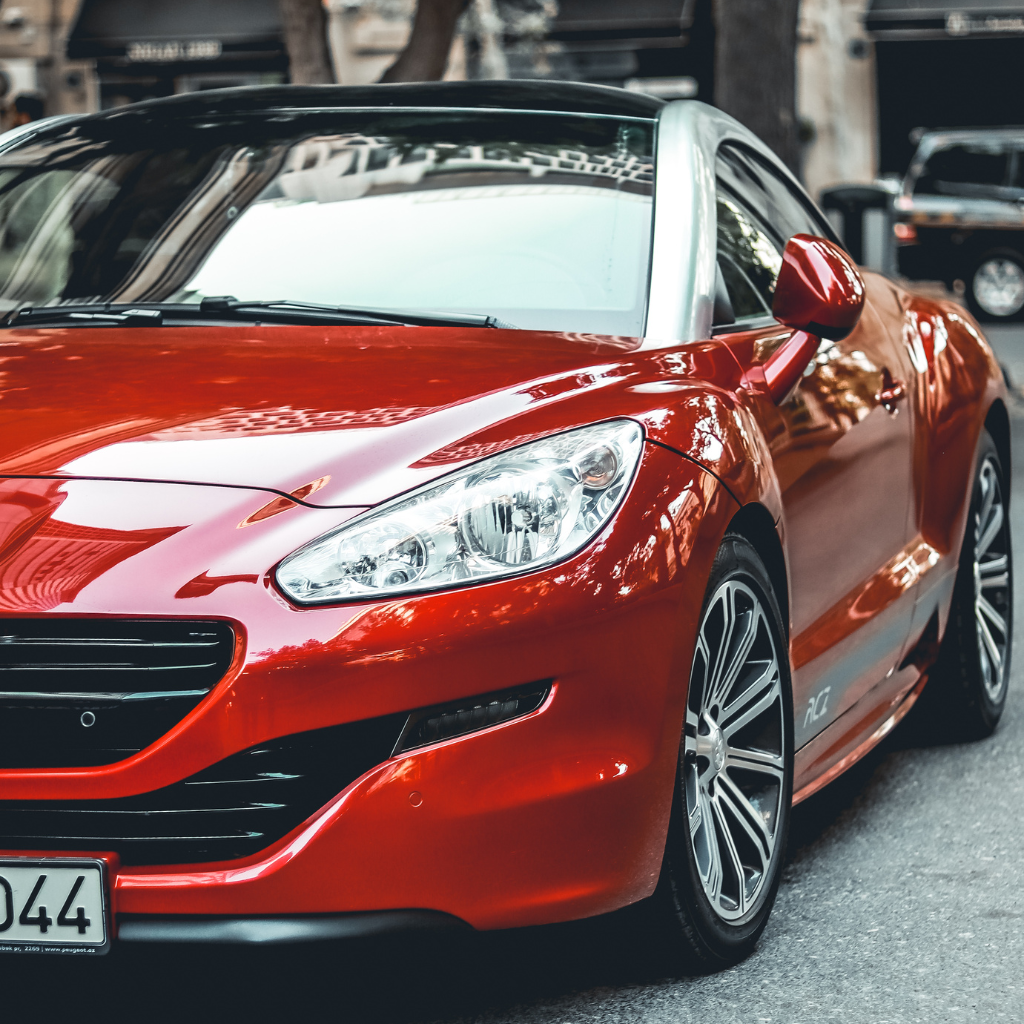
How to Choose the Right Vinyl Wrap for Your Car?
Selecting the appropriate vinyl wrap for a vehicle necessitates an extensive evaluation of factors such as material composition, adhesive quality, and UV resistance, which directly impact durability and aesthetic appeal.
The quality of the vinyl is paramount, as high-grade materials guarantee longevity and maintain vibrancy, reducing the likelihood of peeling or fading under environmental stressors.
Additionally, professional installation is advisable to ensure precision in application, minimizing the risk of air bubbles and misalignment that could compromise the wrap’s integrity.
What Factors Influence the Choice of Vinyl Material
When determining the appropriate vinyl wrap for a vehicle, several critical factors must be considered to guarantee peak performance and aesthetic appeal. The selection process involves evaluating the vinyl car wrap’s material, such as adhesive-backed vinyl film, to ensure compatibility with the vehicle’s curves and contours. Differentiation between types of vinyl wraps, including cast and calendar varieties, is essential for achieving a full wrap without compromising the original paint. Installers must utilize a squeegee technique to eliminate air bubbles and achieve a seamless finish.
| Factor | Description | Consideration |
|---|---|---|
| Vinyl Type | Cast vs. Calendar | Durability and Flexibility |
| Application Method | Adhesive-backed | Compatibility with Surface |
| Vehicle Design | Curves and Contours | Ease of Installation |
| Finish Quality | Installer Skill | Original Paint Preservation |
How Important Is the Quality of the Vinyl
The quality of the vinyl wrap is paramount in determining both the longevity and aesthetic integrity of a vehicle’s finish. High-quality vinyl car wraps guarantee that the type of vinyl used can effectively adhere to the vehicle, providing a seamless look for both whole and full vehicle wraps.
Such quality helps maintain the original paint job while offering a striking graphic. The best car wraps also feature advanced technology to remove air bubbles, which is essential for a smooth application.
When evaluating vinyl wrap options, consider the following factors:
- Durability: Longevity without fading or peeling.
- Flexibility: Ability to conform to complex curves.
- Thickness: Ideal for protection and durability.
- Adhesive quality: Guarantees strong adherence.
- Finish: Options like gloss or matte enhance aesthetics.
Should You Consider Professional Wrap Installation
The precision required for a vehicle vinyl wrap, whether a full vinyl or partial wrap, demands expertise to guarantee the best vinyl adheres flawlessly to the entire surface. Professional wrap installation minimizes errors, such as bubbles or misalignment, which can detract from the custom paint job aesthetic that a high-quality wrap provides. Additionally, experienced installers possess the tools and techniques for handling complex curves and contours.
| Consideration | Professional Installation Benefits |
|---|---|
| Precision | Minimizes errors and imperfections |
| Tools and Techniques | Access to specialized equipment |
| Durability | Enhances wrap longevity |
| Expertise | Knowledge of vehicle-specific needs |
| Finish Quality | Superior, seamless appearance |
Ultimately, professional installation results in a durable and visually striking wrap.
Why Opt for a Vinyl Car Wrap Over a Paint Job?
Vinyl car wraps present a multitude of advantages over traditional paint jobs, including enhanced durability, superior customization options, and ease of maintenance.
When analyzing cost-effectiveness, vinyl wraps often require a lower initial investment and provide the added benefit of preserving the original paintwork, potentially increasing vehicle resale value.
Additionally, vinyl offers greater flexibility in design applications. It can be applied and removed without the extensive labor associated with repainting, making it an appealing choice for both individual and commercial vehicle customization.
What Are the Advantages of a Vinyl Wrap
Opting for a vinyl car wrap over a traditional paint job offers numerous advantages that appeal to automotive enthusiasts and industry professionals alike.
The vinyl wrap provides a versatile solution, allowing for finishes such as gloss vinyl and custom decals. This type of modification is known for its resilience against frequent car washes and environmental factors.
A vinyl sheet application enhances the vehicle’s aesthetics while potentially increasing resale value due to its protective properties. Furthermore, vinyl is considered a cost-effective alternative, often available at a lower price point compared to all-encompassing paint jobs.
- Customizable finishes: From gloss to matte.
- Durability: Resistant to car washes and UV exposure.
- Cost efficiency: Lower price than traditional paint.
- Protection: Acts as a shield for the original paintwork.
- Resale value: Maintains or enhances vehicle appeal.
How Does Vinyl Compare to Traditional Paint
Many industry professionals recognize that the choice between vinyl wraps and traditional paint jobs hinges on various technical and practical considerations. Vinyl is made from PVC, offering flexibility and ease of application compared to the labor-intensive process of a paint job. While paint requires pigment mixed with a liquid base, applied using a roller or spray, vinyl provides an instant camouflage effect, transforming a vehicle’s appearance without altering the original paint. Vinyl vs paint involves differences in texture; vinyl offers a plastic-like finish, whereas paint yields a more traditional, glossy surface. The application of vinyl involves adhesive technology, contrasting with paint’s reliance on tar-based primers.
| Factor | Vinyl Wrap | Paint Job |
|---|---|---|
| Material | PVC | Pigment and liquid base |
| Application | Adhesive | Roller or spray |
| Finish | Plastic-like | Glossy |
| Flexibility | High | Low |
| Customization | Instant camouflage | Labor-intensive |
Is a Vinyl Wrap More Cost-Effective
Why is a vinyl wrap often considered more cost-effective than a traditional paint job? The utilization of vinyl wraps minimizes labor costs and enhances application efficiency on complex surfaces, including concave and convex areas.
Vinyl wraps offer significant savings due to reduced preparation time and the elimination of extensive drying periods associated with paint. The inherent flexibility of vinyl material simplifies its application, aided by tools like microfiber cloths, which guarantee a seamless finish.
- Lower Labor Costs: Reduced workforce and quicker application.
- Versatile Application: Effective on concave and convex surfaces.
- Temporary Solution: Easily removable for updates or resale.
- Enhanced Aesthetics: Available in various finishes and textures.
These factors make vinyl wraps an attractive alternative for those seeking cost efficiency and aesthetic versatility.
How to Maintain and Care for Your Vinyl Car Wrap?
Proper maintenance of a vinyl car wrap necessitates adherence to specific cleaning protocols and the utilization of appropriate tools to guarantee longevity and aesthetic appeal.
Opting for hand washing using non-abrasive microfiber cloths and pH-neutral detergents is recommended to prevent surface damage and maintain the vinyl’s integrity.
Additionally, employing a heat gun or squeegee can aid in preventing air bubbles and guaranteeing a smooth finish, which is essential for maintaining the wrap’s professional appearance.
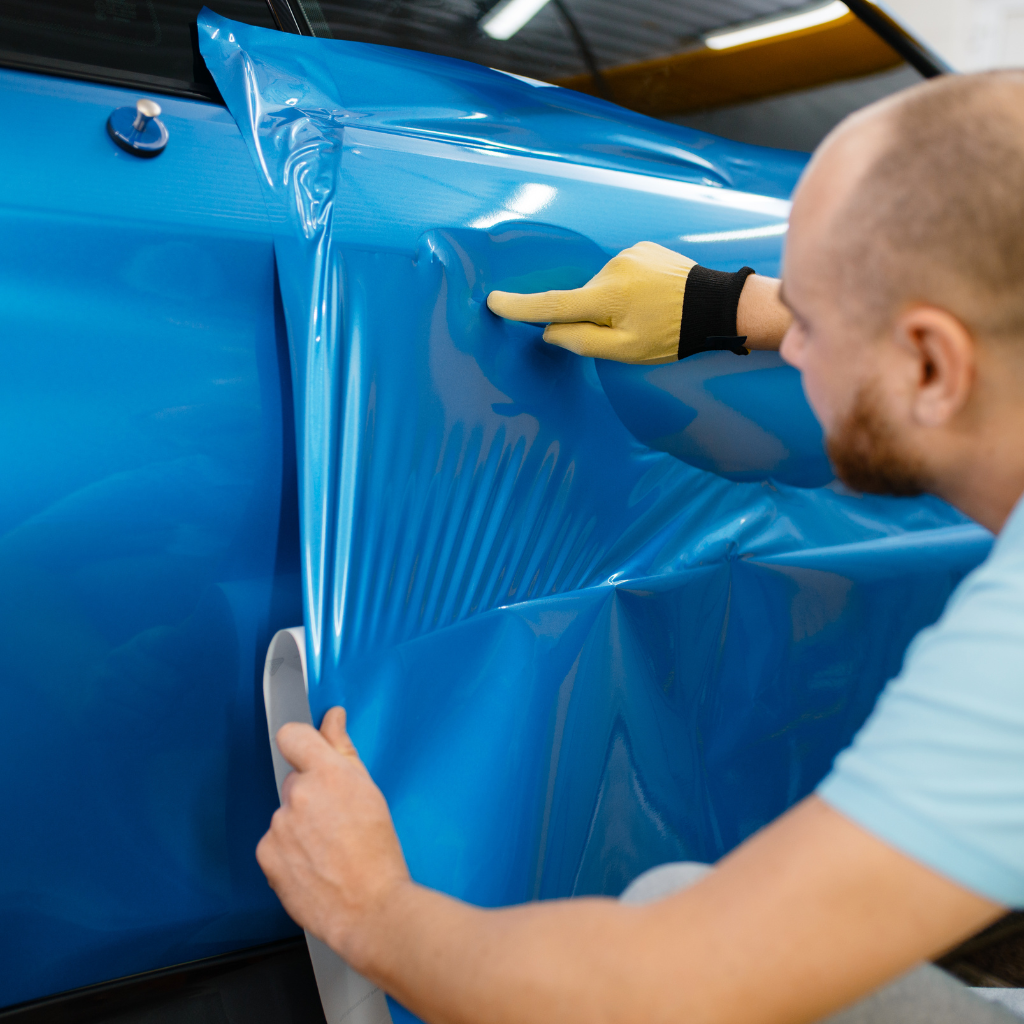
What Are the Best Practices for Car Washes
When it comes to maintaining and caring for a vinyl car wrap, understanding the best practices for car washes is paramount to preserving the wrap’s appearance and longevity.
Utilizing the correct techniques can prevent premature degradation and guarantee ideal aesthetics.
- Hand Wash: Opt for manual washing with a soft sponge or microfiber cloth to minimize abrasion.
- Mild Detergents: Use pH-balanced, non-abrasive soap specifically designed for car wraps to avoid chemical damage.
- Low-Pressure Rinse: Employ a low-pressure hose to wash away dirt without compromising the adhesive bond.
- Avoid Automatic Car Washes: Steer clear of automated systems with brushes, as they can scratch or peel the wrap.
- Dry Thoroughly: After washing, guarantee the wrap is dried with a soft, lint-free cloth to prevent water spots and streaks.
How to Prevent Air Bubbles and Damage
Maintaining the integrity of a vinyl car wrap necessitates meticulous attention to installation techniques and environmental conditions to prevent air bubbles and potential damage.
Proper surface preparation is paramount, requiring thorough cleaning and decontamination to eliminate dust and oily residues. During application, employing a heat gun facilitates ideal adhesive bonding, while a squeegee guarantees even pressure distribution to eliminate entrapped air pockets.
Temperature control is vital, as excessive heat may cause vinyl stretching, whereas cold conditions impede adhesive activation. Post-installation, curing periods allow adhesives to set, securing the wrap’s longevity.
Regular inspections for lifting edges and immediate reapplication of pressure can mitigate premature wear. Adherence to these protocols preserves the wrap’s visual and functional integrity, guaranteeing maximum aesthetic appeal.
What Tools Are Essential for Maintaining Vinyl
Maintaining a vinyl car wrap extends beyond installation, requiring specialized tools to guarantee longevity and aesthetic preservation.
Employing the appropriate instruments will ensure that the wrap maintains its vibrant appearance and structural integrity over time.
Key tools for a professional-grade maintenance routine include:
- Microfiber Cloths: These cloths are critical for scratch-free cleaning, as they prevent abrasion during the cleaning process.
- pH-Neutral Car Shampoo: An important cleaning agent that avoids chemical degradation of the wrap material.
- Detailing Brushes: Used to gently remove debris from hard-to-reach areas without damaging the vinyl.
- Vinyl-Specific Sealant: Provides a protective layer, enhancing the wrap’s resistance to environmental hazards.
- Heat Gun: Useful for correcting minor imperfections, such as wrinkles or slight lifting at the edges.
These tools collectively form a thorough maintenance toolkit, essential for sustaining the wrap’s durability and allure.
What Are the Latest Trends in Vehicle Vinyl Wrap Designs?
The latest trends in vehicle vinyl wrap designs emphasize innovative textures such as carbon fiber, brushed metal, and matte finishes, alongside vibrant color schemes including iridescent and color-shifting hues.
Graphic design integration has advanced with the use of sophisticated software that allows for intricate patterns and high-resolution imagery, enhancing the aesthetic appeal and personalization of vehicles.
In addition, advancements in wrap materials, such as self-healing and thermochromic films, have expanded the functional capabilities and durability of vinyl wraps, setting new standards in the automotive customization industry.
What Textures and Colors Are Popular
In the dynamic world of automotive customization, the latest trends in vehicle vinyl wrap designs are characterized by an array of innovative textures and colors.
These trends are driven by advancements in material technology, providing a vast palette for personalization. High-definition printing and durable finishes have expanded creative possibilities, leading to a surge in unique styles that cater to diverse consumer preferences.
Popular choices include:
- Matte Finishes: Offering a sleek, non-reflective surface, ideal for a sophisticated aesthetic.
- Chrome Wraps: Delivering a mirror-like finish that captures light spectacularly.
- Satin Effect: Combining the smoothness of matte with a hint of gloss for subtle sheen.
- Carbon Fiber Textures: Simulating the look of high-performance materials for an aggressive stance.
- Color-Shift Films: Changing hues with the angle of view for dynamic visual effects.
How Is Graphic Design Used in Wraps
Building upon the diverse textures and colors available, graphic design plays a pivotal role in modern vehicle vinyl wraps by enabling intricate and personalized visual narratives.
Designers utilize vector graphics and high-resolution imagery to guarantee scalability and clarity, allowing for precision in wrap application. A current trend is the incorporation of photorealistic elements, blending digital artistry with physical presence to create immersive designs.
Another significant trend is the use of asymmetric layouts, which generate dynamic visual interest and emphasize brand identity. Designers also employ advanced software like Adobe Illustrator and CorelDRAW for meticulous detailing.
Additionally, the integration of augmented reality (AR) previews offers clients a virtual, interactive experience, guaranteeing alignment with their vision before the final application of the wrap.
What Are the Innovations in Wrap Materials
As the automotive wrap industry evolves, innovations in wrap materials are at the forefront, transforming both aesthetic possibilities and functional performance.
Advanced materials offer enhanced durability, UV resistance, and ease of installation, setting new benchmarks for quality and efficiency. Technological breakthroughs in polymer science and adhesive formulation have led to superior options that cater to diverse consumer needs.
High-performance vinyl wraps now encompass features built to resist extreme environmental conditions while retaining bold colors and a sleek finish.
- Nanotechnology Coatings: Boost scratch resistance and longevity.
- Reflective Finishes: Provide improved visibility and safety.
- Eco-Friendly Options: Use biodegradable materials to minimize environmental impact.
- 3D Textured Wraps: Offer tactile appeal and unique visual effects.
- Smart Wraps: Integrate thermochromic or photochromic pigments for dynamic color changes.
Conclusion
In the domain of vehicle customization, selecting the appropriate vinyl wrap is essential for achieving the desired aesthetic and performance. Cast vinyl, with its superior conformability and durability, is ideal for intricate curves, while calendared vinyl caters to flatter surfaces and shorter-term needs. The choice between matte, glossy, chrome, or carbon fiber finishes car wrap further enhances personalization. Opting for vinyl wraps over traditional paint offers versatility and cost-effectiveness, requiring diligent maintenance to preserve visual appeal and longevity, aligning with contemporary automotive design trends.

